On History, Ideals, and Asian American Theater
This week on HowlRound, we'll be examining Asian American Theatre and exploring the theme of the 4th National Asian American Theater Conference & Festival, "Home: Here? There? Where?"—Click here for the blog series, livestreaming schedule, and future video archive. Use #theNAATF and #newplay in Twitter.
In my first year in the theatre management program at Yale School of Drama, I was greatly invigorated by Founding Visions, a class taught by Todd London, in which we read many excerpts of source texts which were published recently in his book, in An Ideal Theater: Founding Visions for a new American Art (2013). From the magnetic synergies of a group feeding into a specific geographic locale to a federally mandated work program with funds made available to create jobs in the theatre (!), the texts have a palpable immediacy and breath of life. After all, theatre is presence, an action experienced by a group of people that takes place in a unique moment in time, each time. And how remarkable it is to capture this energy through writing, in a way that allows us to draw revelation and meaning.
As London states in the introduction, the anthology is not comprehensive and his review is guided by the “quality of the writing” and an understandably personal quest towards a “search for inspiration and influence.” I do not think anyone can, nor should, extricate personal motivations from any history. As some Asian American theatre attendees at the recent Theatre Communications Group conference pointed out, what does it mean though that there are not more histories out there and in conversation with each other? This question led me to search for and compile a few source texts written by Asian American artists who have founded theatres, some of which I share below.
All historical accounts are written from a specific vantage point in time, and are just as much a reflection of the time that it was written as the time being written about. I was thinking this as I was rereading Esther Kim Lee’s excellent A History of Asian American Theatre, published in 2006. I appreciate the title—it’s conscientiously “a” version, not “the.” In the introduction she describes the elusive task of trying to write a theatre history, “because of theatre’s inherently collaborative nature, each artist’s career was linked to numerous others.” To write about a communally driven art form leads to a Rashomon style; a fragmented understanding of this history and one in which she must draw some limits and boundaries, which she does so by mainly framing the book through Asian American theatre companies and the time period, 1965–2005. Even with these limitations, the task at hand is laden with countless perspectives and truths.
From the very beginning, there has been a struggle on the part of actors of Asian descent to assert their humanity in the face of a history and culture deeply entrenched in exotification and other-ing, an inextricable aspect of Western dominance and national identity building throughout modern history.

The field of theatre, like any history, is a moving stream, constantly being defined and shaped through the decisions that we make as theatre practitioners, from the most mundane—how to allocate an expense, how to focus the next hour towards one pressing priority over another—to the ones marking greater impact through its ripple effects—how to construct a season, structure your company, define a mission. The ongoing negotiation between an idea and the reality of our limited time and energies define who we are and constitute the field (however passively or proactively) on a day-to-day basis. To add to the complexity, theatre being a collaborative form is the conjunction of each participating artist and their individual impulses and decision-making.
The forty-year timeline of Asian American theatre in Kim Lee’s book is interesting to reflect upon at this point in time, 2014. A few things stick out: the different founding impulses that carried through, the key private foundation and public grants that helped to launch the first Asian American theatre companies, the companies no longer in existence, the disputes, allegiances, beliefs, and varying goals that constituted the motivations for the artists involved.
Each company has a unique history because of the specific sociocultural environment and geographic location. The founders’ distinct visions of Asian American theatre also contributed to the differences… All four companies have had the same goal: to create a space for the development and expression of Asian American theatre. The specific ways to achieve that goal have differed, however.
This excerpt is taken from a chapter entitled “The First Four Theatre Companies,” which Kim Lee designates as East West Players in Los Angeles, Asian American Theater Company in San Francisco, Northwest Asian American Theatre in Seattle, and Pan Asian Repertory in New York City. The notion of Asian America is a reflection of a specific milieu of 1960s social unrest and radical activism. The term “Asian America” was first coined as an act of self-identification in the 1960s by the historian Yuji Ichioka as a rejection of the descriptor “oriental,” which Kim Lee considers “racist and imperialistic.” The Asian American movement was in part the result of mobilizing efforts of students at San Francisco State University for the inclusion of ethnic studies. This identification carries tensions within it that very much manifest when operating Asian American theatre companies. For example, the tension between an all-encompassing identity marker and one of specific experiences reflective of different countries of origin is a contradictory one. From the very beginning, there has been a struggle on the part of actors of Asian descent to assert their humanity in the face of a history and culture deeply entrenched in exotification and other-ing, an inextricable aspect of Western dominance and national identity building throughout modern history. Exclusion is written into the DNA of the Asian experience in the United States, and on more than one occasion, was the official law of the land, with the Chinese Exclusion Act of 1882 and Executive Order 9066 authorized by Franklin D. Roosevelt, which led to the internment of over 100,000 Japanese Americans during World War II. The reality of a shared Asian American experience will continue, but to embrace this double-edged sword of an identity is to enter a trap.
The excerpts of founding visions I present below are in their individual ways a reflection of the trap that is the Asian American identity and an acknowledgement of the reality of the Asian American shared experience in this country. They are prescribed and informed by a NYC/Northwest geography and the belief that form can be stretched by a political embrace of identity.
***
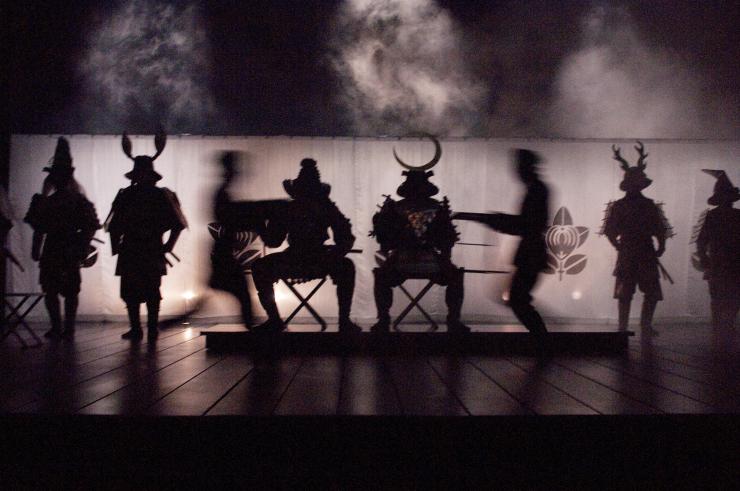
This is something I found in the Ping Chong + Company office the other day (where I am general manager). It is an article Ping Chong wrote in the early 1980s for Millennium Film Journal entitled “Performance and Film: A Statement”:
One of the difficulties some audience members have with my work is the at-first disjunctive shifts of emphasis or focus: on place instead of character; on object or objects rather than a situation; on the performance giving way to media and back to performance again, to complete a given narrative. In a film, when an audience member views an empty room with a curtain blowing, a fly crawling along the surface of a vase, a hand opening a box of chocolates, a squeaking street sign blown by the wind, an army seen through a window marching in the distance, a room of busy people who never speak a word—it is accepted as an image and a component of a narrative. No one asks why the actors aren’t speaking or even where they are. The filmic viewpoint is automatically accepted, the conventions having been long established. It is an accepted way of seeing. Once it is understood that a similar ontological viewpoint can be taken in theatre, confusion will hopefully give way to enjoyment, and perhaps even an alternate way of seeing theatre.
As a student of visual art and film who grew up in New York City’s Chinatown, Ping Chong is not a conventionally understood theatre artist. He is informed not only by his self-proclaimed “outsider” status in terms of identity, but also in his interdisciplinary, visually driven approach to making work, which is reflective of the era and locale in which he started out as an artist. I lead with this excerpt because it is itself a “disjunctive shift.” Ping Chong + Company is a theatre company that does not consider itself an Asian American theatre company but rather one that explores “otherness,” metaphorically and historically. The experience of being an Asian American, raised in an immigrant community, is a deeply defining one for Ping Chong. Through his work, he has bridged his specific experiences with others, revealing shared humanity.
***
In Alvin Eng’s Tokens? The NYC Asian American Experience on Stage, a “verbal mural” with direct quotes from New York City-based theatre artists is kicked off with a big photograph of the late Ellen Stewart. Here, she tells her version of the origin story of Asian American theatre in NYC.
I started what is now called “Asian American theatre” in New York in 1970 with La MaMa Chinatown. Ching Yeh and Wu Gingi, who were part of La MaMa, told me that they wanted very much to have something in Chinatown. They told me that the only thing in Chinatown was an occasional traveling troupe doing Beijing opera and not really anything else and would I come and do something? So I did. We were able to get the basement of the Transfiguration Church on Mott Street, and the first La MaMa Chinatown show was Three Travelers Watch the Sunrise by Wallace Stevens on August 6, 1970. In 1972 we changed the name of La MaMa Chinatown to La MaMa Asian Repertory Theatre. Then in 1976, they asked if they could call themselves Pan Asian Repertory Theatre; I trained Tisa Chang. So I can’t say that somebody else wouldn’t have come along and started Asian American theatre, but I was the one.
This statement makes me think about generosity, the angel investors (not necessarily always monetarily) who create the artistically fertile environments to start movements. It also reminds me of how interconnected and interdependent our field is on each other to thrive. What types of non-monetary resources are available for us to support each other in this spirit?
***
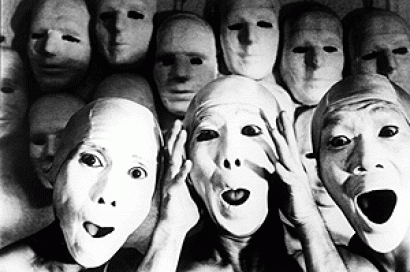
Photo by Perry Yung.
Slant is a performance group based out of La Mama that was formed in the 1990s. Its members were multi-faceted, Asian American performers Rick Ebihara, Perry Yung, and Wayland Quintero. Here is an excerpt of a statement that Perry Yung wrote for an anthology entitled, Yellow Light: The Flowering of Asian American Arts, edited by Amy Ling.
Slant is a performance group that surfs the fine “pipeline” between race and culture, between the condition of the Other and the dominant society. The Asian American references in our work create a conceptual framework that enables us to dive into a sea of cultural assumptions in search of universal truths…Working as a member of La MaMa Experimental Theater Club’s residency group in New York City has shown me that society and culture are merely a coat covering humanity; if we want to question and expose, we must get under the skin. Slant seeks to tell the truth across universal boundaries.
Rick Ebihara and I were debating heatedly once about whether there is an authentic Asian American sensibility or not. After a few beers, we found that he, a fourth generation Japanese American born in Davenport, Iowa, and I, a first-generation Chinese American born in the Bay Area and raised in Texarkana, Texas, had only two things in common: we both had owned and driven Camaros at one time in our lives and both our dads pumped Elvis into our living rooms daily. With Wayland Quintero, who is Filipino Japanese from Hawaii, I share the love of surfing—he on the waves of Waikiki and I on the sidewalks of Northern California. If there is an authentic Asian American sensibility then I would say that it is close to that of an authentic American sensibility.
Slant still exists, but is no longer producing full-length shows and is currently a duo, as one of the members, Wayland Quintero, moved to Hawaii. Their next appearance will be at the upcoming National Asian American Theater Festival on October 9th.
***
The importance of self-definition, creating work on our own terms, against the constant of “misnaming,” is the driving engine behind the work of many Asian American theatre artists and visionaries.
While an undergraduate at Mount Holyoke College, my proximity to New WORLD Theater (NWT) at the University of Massachusetts at Amherst afforded me opportunities to intern, attend performances and the Intersections Conference (a biannual conference designed to provide networking opportunities to playwrights and teachers across the country), and delve into the Asian American Women’s Theater Archives, all the brainchild of founder, Roberta Uno. NWT shaped my fundamental beliefs for the potential of theatre and performance to elevate and transcend boundaries. The forms were driven by an expansive view of identity and the impulse to move beyond prescribed categorizations. From The Color of Theater: Race, Culture and Contemporary Performance, Uno said:
The founding vision was to create a theatrical space that would offer a contemporary program of works by Black, Latino, Asian, and Native Americans, a repertory that was completely invisible within the existing arts environment of the region. The theatre was founded while apartheid was still the rule in South Africa, and it drew parallels between supporting the anti-apartheid movement and combating racial and cultural de facto segregation in America. It was an anti-racist, multiracial project that, in addition to producing theatre, recognized New England’s geographic isolation and included visiting touring productions in its season. It was in many ways a desegregation project, as opposed to an integration effort. By this I mean it was not an effort to bring “color” to the existing theatre production paradigm through multiracial or ethnically transposed productions of the European or Euro-American canon. It was an effort to desegregate a public institution by gaining the means of production to offer a completely autonomous and self-defined artistic program.
It is projected that by the year 2050, Caucasians will become a minority in the United States, outnumbered by people of color, a monolithic category that, while affirming unity, obscures the complexity of difference. In their essays, both Jaye Darby and Diana Taylor, in discussing different arenas of indigenous contemporary performance, speak to the naming and misnaming of Indians, underscoring the power of terminology to obscure and even obliterate. According to Taylor, “the naming of the ‘people called Indians’ both conjured up and disappeared a people’ conflating the Incas, Mexica, Mayas, and other autonomous groups. Having organized New WORLD Theater around the principles of racial visibility, access, and autonomy, within the context of coalition and community building, how will the terminology, ‘people of color’ move forward into this projected near future of 2050?”
The importance of self-definition, creating work on our own terms, against the constant of “misnaming,” is the driving engine behind the work of many Asian American theatre artists and visionaries. The founding vision of NWT, driven by a need to “combat racial and cultural de facto segregation” is still as urgently pressing today as it was in 1979.
***
Despite the varied genealogies of these companies, however, all of them arise at least in part as a response to the abjection of Asian Americanness in dominant culture. The choice of theatre as the form for that response is worth considering. Why might theatrical performance be a particularly appropriate rejoinder to nation, racial, and cultural abjection? Gotanda [playwright Philip Kan Gotanda] speculates that in the political climate of the early 1970s, theatre presented itself to Asian American social and political activists as an attractive medium for protest because “it’s cheap and it’s immediate and…there are aspects of it that are really symbolic—the agitprop aspect of it, where you can very quickly put out political and cultural ideas, you can do a kind of guerilla theatre…It’s also out there—you’re out in front.” (From Chapter 2 “The dance that’s happening” Performance, Politics, and Asian American Theatre Companies,” A National Abjection by Karen Shimakawa.)
In the chapter describing the founding years of the first four Asian American theatre companies, Kim Lee describes the interpersonal challenges and tribulations that are an ongoing part of the reality of work and creating theatre. Theatre can be “cheap and immediate” as described by Gotanda above, but it also develops and evolves into a complicated endeavor—full of messy beginnings, starts and stops, doubts, departures, entries, happenstance miracles, growth, big personalities and egos, devotion to a community, and the driving ideals that this country can truly be big enough to welcome all of the above in order to carve a path for that which is yet to be seen.
***
Sources
Eng, Alvin, ed. Tokens: The NYC Asian American Experience on Stage. Philadelphia: Temple University Press, 2000.
Kim Lee, Esther. A History of Asian American Theatre. New York: Cambridge University Press, 2006.
Ling, Amy, ed. Yellow Light: The Flowering of Asian American Arts. Philadelphia: Temple University Press, 1999.
London, Todd, ed. An Ideal Theater: Founding Visions in American Theater. New York: TCG, 2013.
Shimakawa, Karen. A National Abjection: The Asian American Body Onstage. Durham: Duke University, 2002.
Uno, Roberta and Lucy Mae San Pablo Burns, eds. The Color of Theater: Race, Culture and Contemporary Performance. New York: Continuum, 2002.
Thanks to, Bruce Allardice, Sara Zatz, Victor Maog, Megan Smith, and Vicky Abrash for their insight and assistance.

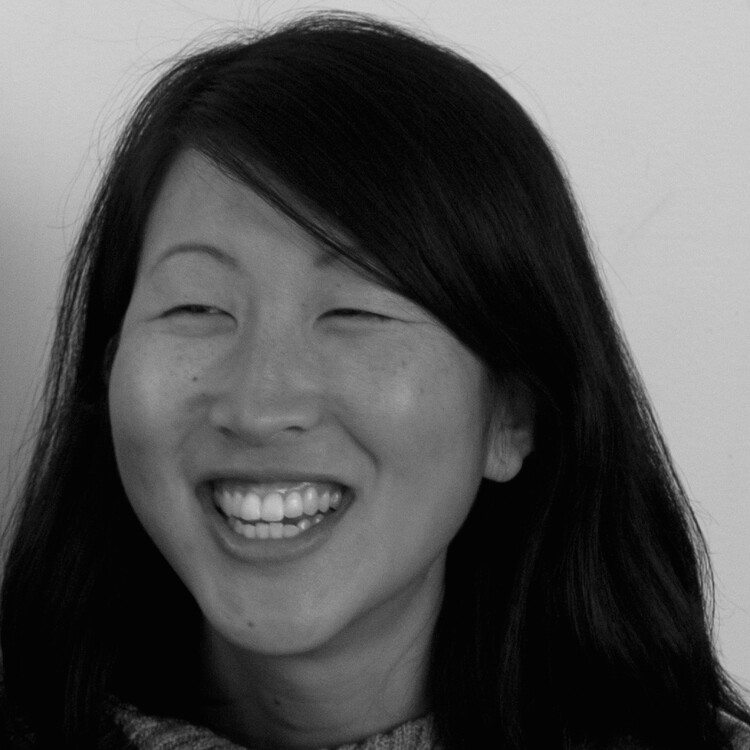
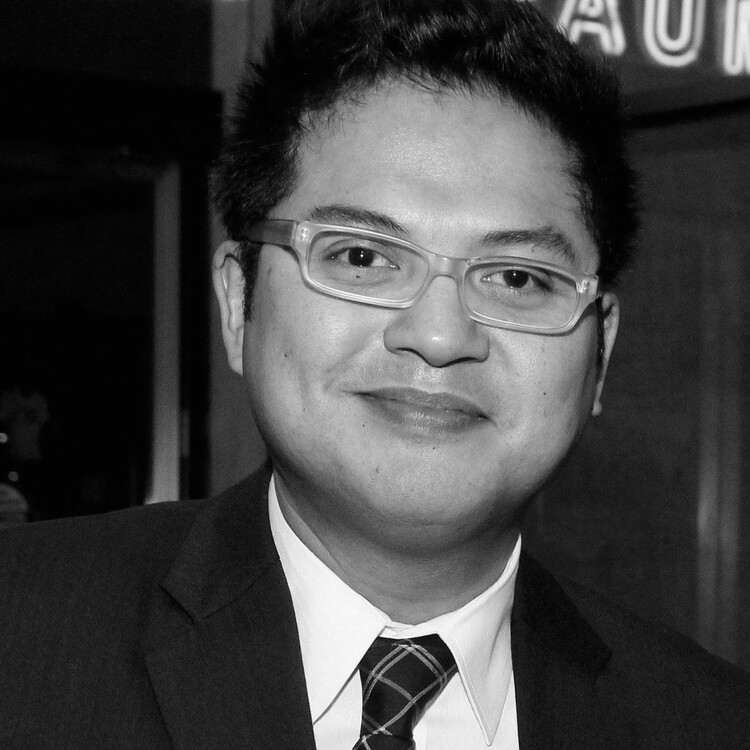
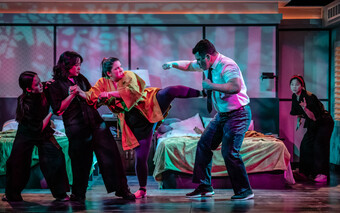



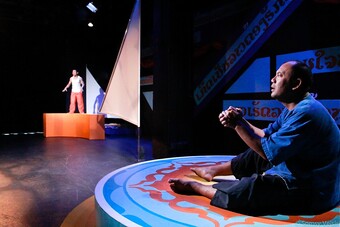








Comments
The article is just the start of the conversation—we want to know what you think about this subject, too! HowlRound is a space for knowledge-sharing, and we welcome spirited, thoughtful, and on-topic dialogue. Find our full comments policy here